Latest News
The Power of Public Involvement to Implement Projects
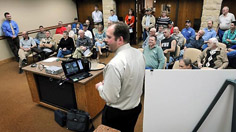
By Angie Bersaw, AICP, Bolton & Menk, Inc.
“Public involvement can make or break a project.” We hear this often, but what does it really mean?
There are many examples of projects that involved the public and yet were shelved because opponents created political grid-lock. How can this be avoided? How can public involvement be used to get projects implemented?
Back to Basics: Why involve the public?
Public involvement has a role in most projects utilizing public dollars; however, reasons for involving the public vary considerably. Some are simply satisfying legal requirements, others seek to inform, gather input, or even empower the public to approve a project. Whatever the reason, it is important to remember there are likely additional returns beyond those immediately considered.
Public involvement can lead to identifying issues you weren’t aware of, improving general trust in government, and creating a sense of ownership and support for a project. Developing support is a real public involvement return on investment many take for granted. It’s easy to get caught up in satisfying legal requirements (Two public open houses: Check!) and forget public support is the end goal. An effective public process should make easy the elected officials’ decision to implement the project.
How do you use public involvement to implement projects?
It’s important to first define and communicate the problem at-hand. It’s tempting to jump directly into identifying solutions without gathering input on the actual problem.
Does the public understand the problem and support the need to do something about it? Do they understand what will happen if the problem is not addressed? They need to! And you need to tell them! This is the first step in building public support. Chances are the public has valuable input you might not be aware of and you can learn more about the problem than originally anticipated.
The second step is to identify who to reach out to. This outreach should focus on essentially anyone who has a stake (physically, financially or otherwise) in the project. Don’t think too small here. This should include those who do or have the potential to oppose the project, whether they have a perceived stake in it or not. I know, reaching out to those who oppose your project is not a particularly enticing prospect. But to build support, you need to understand their issues and educate them on the need for the project and the major constraints you are working within (i.e., financial limitations, environmental laws, etc.). This will help manage expectations, a sort of “walk in my shoes for a day.”
The reverse is also true: by involving the public, staff and elected officials learn about public attitudes and concerns. This two-way communication sets the stage for a mutual understanding and respect.
We’re not saying public involvement will lead to 100 percent support of a project. The goal is to make sure the public is educated and involved so they understand the trade-offs and have an opportunity to help influence the project. A project that the public helped influence or can personally use is more likely to be supported.
Sounds good, but how do you do that?
The keys to an effective public involvement program are transparency, flexibility, and constant communication. The public should be involved early and continuously. They should understand your objectives in soliciting input (a.k.a., are you informing? asking for input? or, empowering them to approve the project?).
You need to clearly define the problem and consequences, if not addressed, and follow-through. If you say you’re going to get back to them, then do it! Don’t be afraid to meet with a property owner or business group if you sense they have some concerns. Keep the lines of communication open, and be honest about what you can and cannot control. Show how their input was used or educate on why it wasn’t.
Effective public involvement does not mean you have more meetings. You don’t need to do more public involvement, you just need to do it better! Have a well thought out public involvement plan and adjust it as the project progresses. And, last but not least, be innovative.
There are many new methods of gathering public input (e.g., social media, audience polling equipment, interactive design applications, etc.). See what works best for those you’re working with and don’t be afraid to try something new.
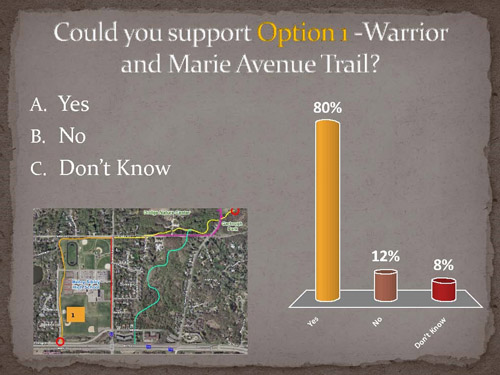
Audience polling equipment is a relatively new tool allowing the project team to “take the temperature” of meeting attendees on a particular topic. Results are automatically displayed on screen during the presentation for all to see.
At the end of the day, it’s very likely you will have a successful project -- built on the foundation of the power of public involvement -- if your stakeholders understand:
-
The problem at hand and consequences if not addressed.
-
The thought-process behind why certain solutions were proposed, dismissed, and recommended.
-
They can create a sense of ownership in the project through participation.
-
You and your agency have listened and incorporated input where possible.
Before and After Graphics Can Help Illustrate the Problem and Proposed Solutions (See below.)
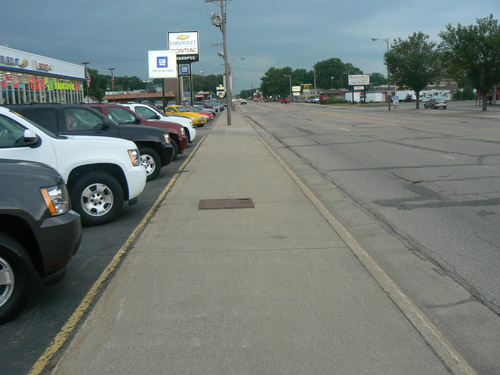
Above: Before
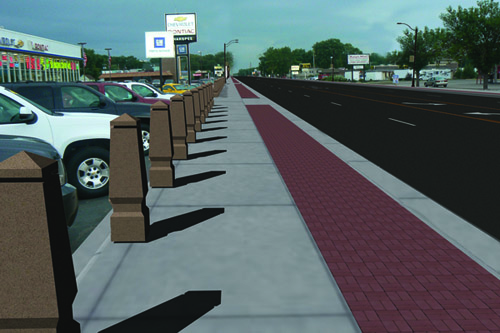
Above: Visualization
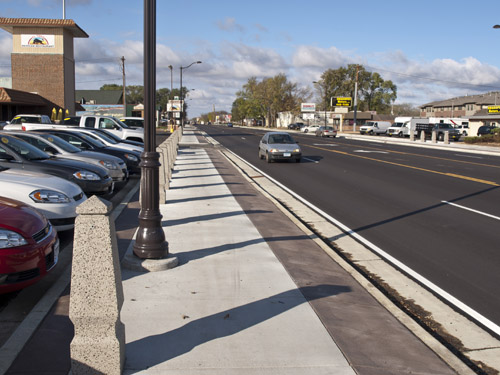
Above: After
Angie Bersaw, AICP, is transportation planner and public involvement coordinator for Bolton & Menk, Inc.
What's New
-

Young Professionals Spotlight
March 25, 2024
-

APWA-MN Education Programs
March 25, 2024
-
Apply for the Young Professionals Stipend: Attend PWX Atlanta
February 23, 2024



